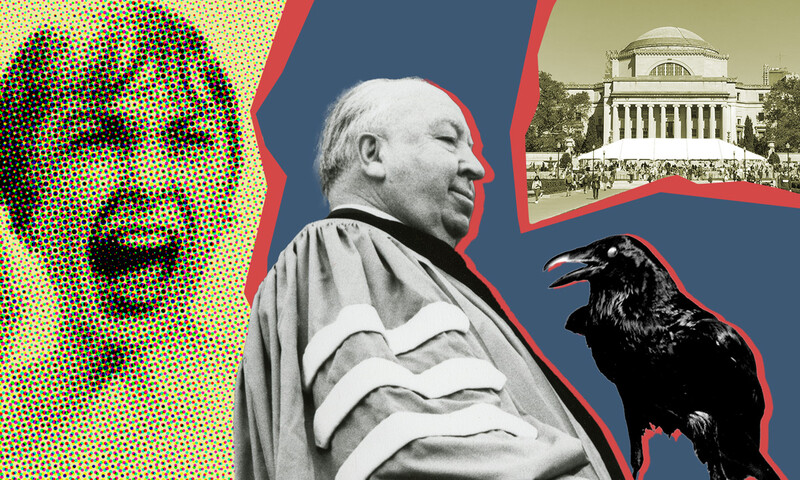In the spring of 1996, someone who knew someone who knew Allen Ginsberg arranged for my 11th-graders from The Putney School in Vermont to visit Ginsberg’s poetry class at Brooklyn College.
We arrived early and walked in on him alone in the classroom. In black suit and tie, poking at a pint container of broccoli florets with a white plastic fork, sitting amid piles of books, black Borsalino hat on the shelf behind him, the great poet seemed less lama than Talmudist. The right side of his face, creased and weathered, kept trailing behind the left, and the once-woolly beard had withered to graying wisps. But the eyes behind the horn-rims held their power, and the syncopations of that unmistakable tenor were thrilling.
We had him to ourselves for a half hour. He may have been tired and weak (he died less than a year later), but I’ve never met anyone less bored. He wanted to know all he could about my students and asked about their hometowns, their reading, their music. When his class arrived — 10 graduate students, who gathered around the desk like presidential policy advisers — my kids retreated to the perimeter and waited for the fireworks.
It was a terrible class. He was teaching Dryden. His commentary was funny and brilliant, but the session was sheer dentistry. Half the students were flat, the other half openly hostile toward Ginsberg, Dryden, poetry, the whole 17th century. He’d had them write rhyming tetrameter quatrains, and some of them had fumbled badly. One woman who spent the class turned contrapposto away from America’s most famous living poet, announced, “I didn’t feel like doing it, so I wrote something else.” My students — hardly models of reverence — gasped.
When class, the last of the semester, was over, we stayed while he puttered, throwing his effects into a few plastic Waldbaum’s bags. “The lesbians hate me,” he said. “They just want to read Beat poems and contemporary stuff.” Dryden, Marvell, Herrick, he said, had been the teachers of his youth.
My students jumped up to help him load books. This freed him to dig into a sheaf of papers. “Here’s something I wrote when I was your age,” he said. Then he read aloud his teenage imitation of the Metaphysicals.
“I have to call the car service,” he said at last.
One of my students looked at me. “We have the van,” she said.
That seemed to settle it.
And so as we crossed the bridge into Manhattan, there was Allen Ginsberg happily squeezed between two good-looking guys on the bench seat. “Does this van have a tape player?” he asked. He handed up a cassette of an unknown blues singer he had just discovered. I drove with anxious vigilance through New York’s rush hour.
East 12th Street, where Ginsberg lived, was narrowed with double-parked cars. Ginsberg tried to grab the bags of books. “Can you help me carry these up?” he asked us. The students looked as if they had won the lottery. But someone had to stay with the van in case anything larger than a Beetle came by.
They were in his apartment for 40 minutes; I sat on the church steps across the street, watching for trucks. Occasionally a student would appear at the window and wave.
Later, heading back to Vermont, I listened to descriptions of the poet’s apartment, his paintings, and the photos and artifacts of Burroughs and Kerouac. We had taken no photos. Our only autographs were the kisses Ginsberg gave them on the cheek as they left.
In “Death and Fame,” written a month before he died, Ginsberg imagined the mourners at his funeral, including “high school teachers, . . . super-fans, poetasters, aging Beatniks and Deadheads, autograph hunters, distinguished paparazzi, intelligent gawkers. . . .” As poet and icon, he knew well what he was to people, what he could leave behind, and that’s what a teacher knows, too.
My students these days say I should have let the traffic back up, let the van be towed. They say I missed the moment of a lifetime.


